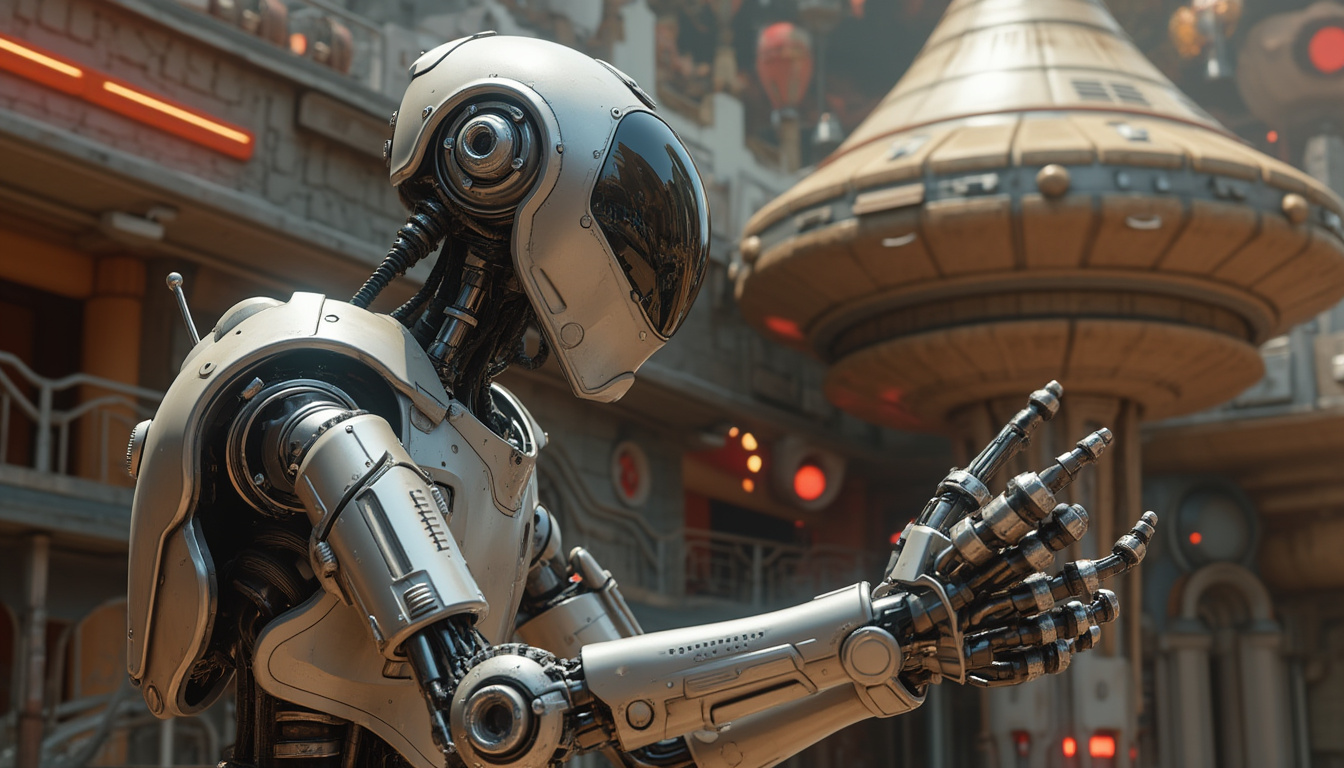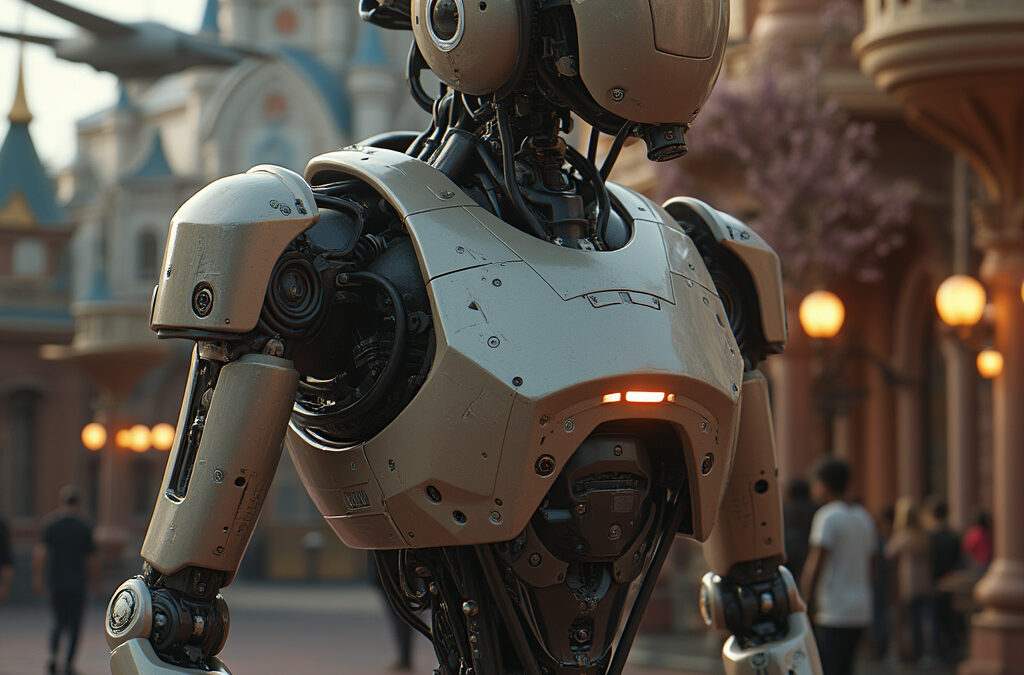Jensen Huang’s Announcement About a New Robotics Engine Could Mean Better Disney ‘Star Wars’ Droids
In a move that could revolutionize both robotics and entertainment, NVIDIA CEO Jensen Huang recently unveiled a groundbreaking innovation at the company’s GTC 2025 conference. The announcement of a new robotics engine, developed in collaboration with Disney Research and Google DeepMind, has sparked excitement across industries.
Named Newton, this advanced physics engine is designed to simulate robotic movements with unprecedented realism. By enabling robots to interact with their environments more naturally, Newton promises to unlock new possibilities for robotics in entertainment, healthcare, and beyond.
Disney, a key partner in this initiative, plans to leverage Newton to bring its next-generation entertainment robots to life. Among the most anticipated are the Star Wars-inspired BDX droids, set to debut in Disney’s theme parks starting next year. These droids are expected to feature more expressive movements and interactive capabilities, creating immersive experiences for fans worldwide.
During Huang’s keynote, a prototype named Blue was showcased, demonstrating the engine’s potential. The collaboration between NVIDIA, Disney, and Google DeepMind highlights the growing intersection of technology and entertainment, paving the way for more lifelike robotic characters in the future.
NVIDIA’s decision to release an early open-source version of Newton later in 2025 could further accelerate innovation. By making this technology accessible to developers and researchers, the company aims to foster advancements across various industries, from manufacturing to education.
While the full details of the Inc.com article are not available, the implications of this announcement are clear: the future of robotics is becoming increasingly intertwined with entertainment, and Disney’s Star Wars droids are just the beginning.
The Enhanced Capabilities and Future Implications of NVIDIA’s Newton Engine
The introduction of NVIDIA’s Newton engine represents a significant leap forward in robotics technology, particularly in simulating realistic movements within real-world environments. This engine is specifically designed to enhance the expressiveness and precision of robots, enabling them to handle complex tasks with greater accuracy and fluidity. Such advancements could revolutionize various industries, including healthcare and manufacturing, by introducing robots that can interact more naturally with their surroundings.
Disney, being a key collaborator, is set to utilize Newton for its upcoming entertainment robots, with the Star Wars-inspired BDX droids being a prime example. These droids are expected to make their debut in Disney’s theme parks starting next year, offering fans a more immersive and interactive experience. The integration of Newton technology will allow these droids to exhibit more lifelike movements, further enhancing the magical environment that Disney is renowned for.
NVIDIA’s strategic decision to release an early open-source version of Newton later in 2025 is poised to stimulate innovation across multiple sectors. By making this technology accessible to a broader audience, including developers and researchers, NVIDIA aims to accelerate advancements not only in entertainment but also in fields such as education and manufacturing. This open-source approach could lead to a proliferation of innovative applications, driving the robotics industry towards new frontiers.
The collaboration between NVIDIA, Disney Research, and Google DeepMind underscores the growing synergy between technology and entertainment. This partnership is paving the way for the development of more sophisticated robotic characters, capable of delivering unparalleled interactive experiences. As this technology continues to evolve, the possibilities for its application extend far beyond the realm of entertainment, promising transformative changes across various industries.

Conclusion
NVIDIA’s announcement of the Newton robotics engine, in collaboration with Disney Research and Google DeepMind, marks a pivotal moment in the fusion of technology and entertainment. This advanced physics engine promises to redefine how robots interact with their environments, delivering unprecedented realism and expressiveness. For Disney, this means bringing Star Wars-inspired droids to life in theme parks, offering fans more immersive and interactive experiences. Beyond entertainment, Newton’s potential to transform industries like healthcare, manufacturing, and education is vast. By making an early open-source version available, NVIDIA is democratizing access to this groundbreaking technology, paving the way for innovation across sectors. As robotics continues to evolve, collaborations like this underscore the limitless possibilities at the intersection of technology and creativity.
Frequently Asked Questions
What is NVIDIA’s Newton engine?
NVIDIA’s Newton engine is a cutting-edge robotics engine designed to simulate realistic robotic movements and interactions with environments. It aims to enhance the expressiveness and precision of robots for various applications.
How does Newton improve robotics?
Newton enables robots to interact with their surroundings more naturally, allowing for more lifelike movements and complex task handling. This makes robots more versatile for industries like entertainment, healthcare, and manufacturing.
Who collaborated with NVIDIA on the Newton engine?
NVIDIA collaborated with Disney Research and Google DeepMind on the development of the Newton engine, combining expertise in robotics, entertainment, and AI.
How is Disney using the Newton engine?
Disney plans to use the Newton engine to develop next-generation entertainment robots, including Star Wars-inspired BDX droids, which will debut in Disney theme parks starting next year.
When will the Newton engine be available to the public?
NVIDIA plans to release an early open-source version of the Newton engine later in 2025, allowing developers and researchers to explore and innovate with the technology.
What industries will benefit from the Newton engine?
Besides entertainment, industries such as healthcare, manufacturing, and education will benefit from Newton’s advanced robotics capabilities, enabling more natural and precise robotic interactions.
What does this mean for the future of robotics?
The Newton engine represents a significant step forward in robotics, offering enhanced realism and interactivity. Its open-source release could accelerate innovation, leading to transformative changes across multiple industries.

